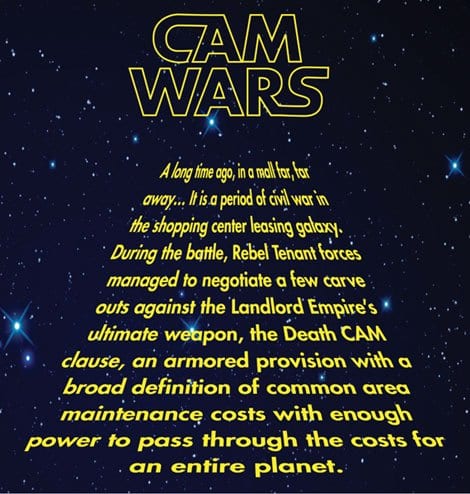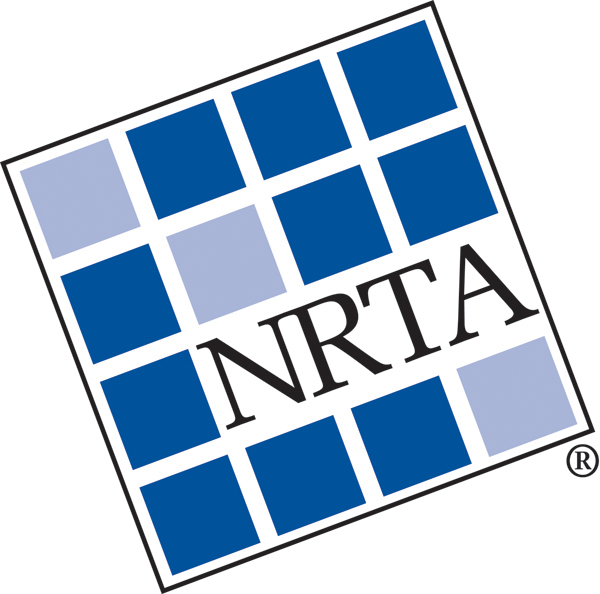CAM WARS
(Part 2 – Tenant’s Fair Share)
by C. Gregg Ankenman, Esq.; Wendel, Rosen, Black & Dean LLP [email protected]

This article is the second in a two-part series dealing with the issues that representatives of retail tenants should consider when negotiating provisions regarding common area maintenance (CAM) charges in leases. Part 1 examined some key points with respect to negotiating what is included in and what is excluded from CAM costs passed through to the tenant. This article focuses on other important aspects of CAM clauses that retail tenant representatives should address when negotiating leases: the determination of the tenant’s share, caps and audit rights. As pointed out in Part 1, particular concerns vary from tenant to tenant and also depend on the nature of the center and the landlord. Of course, what a tenant can negotiate in a given lease is a function of many factors including market conditions and the relative bargaining power of the landlord and tenant. The aim of this article is to examine general concepts and guidelines to better arm retail tenants for negotiating the definition and parameters of the tenant’s share of CAM costs in leases.
DETERMINATION OF TENANT’S PRO RATA SHARE.
Even if a tenant has successfully negotiated a definition of CAM costs with the exclusions and limitations discussed in Part 1, the tenant can still end up paying more than expected if the tenant does not give proper attention to the lease language defining how the tenant’s share is determined. At first blush, the tenant’s share might seem pretty straightforward: it’s usually a fraction using the floor area of the tenant’s premises as the numerator and the floor area of the shopping center (or some other applicable area) as the denominator. But, as is often the case in leases, the devil is in the details. Following are some of the key danger areas a tenant should consider.
Leased vs. Leasable Denominator. A pure pro rata share of CAM costs would use the entire “leasable” area of the shopping center as the denominator. Landlord lease forms will sometimes use the “leased” area of the shopping center. In other words, if any leasable space is not leased it is excluded from the denominator. This effectively causes the tenant to subsidize the landlord for vacancies in the center. When there are significant vacancies (e.g., a new center that is still in the initial lease-up phase or a center suffering from vacancies due to market conditions), this can have a dramatic effect on the tenant’s share. Of course, a tenant should push to have a leasable area denominator. That said, there are situations where there is particularly high demand for space in the center or the landlord otherwise has sufficient bargaining power to force the tenant to accept a leased area denominator. In those situations, as a backstop against high vacancy in the future, the tenant should at least negotiate a minimum percentage of the leasable area of the shopping center that must be deemed to be leased for purposes of calculating the tenant’s share.
Excluded Areas. Another common twist in the way many retail leases define the calculation of the tenant’s pro rata share is the exclusion of certain areas from the denominator. Among the most commonly excluded areas are: anchor tenant spaces, pads and outparcels, and non-retail areas. The justification for excluding anchor tenants, at least in part, is the assumption that the smaller tenants benefit from the customers the anchors draw to the center. By this reasoning, landlords argue it is fair to ask the smaller tenants to subsidize the CAM costs for the anchors. It is critical to be careful how anchor tenant spaces are defined in order to be sure that the excluded area corresponds to a legitimate retail anchor tenant open and actively operating in the center to attract customers. The landlord’s argument for excluding pads, outparcels and non-retail areas is often based on the ancillary nature of their locations and business operations relative to the main retail common areas. Depending on the layout of the center, it may be true that these outlying or non-retail areas do not really cause or benefit from many of the CAM costs. The keys are to be sure that if these areas are excluded in calculating the tenant’s share of CAM costs, that any costs attributable to these areas are also excluded from overall CAM costs. If any excluded tenants make some contribution to CAM costs, those contributions should be applied against CAM costs before calculating the tenant’s share.
Cost Pools. In mixed use centers or centers where certain costs are attributable primarily to some tenants and not to others, the leases may allow the landlord to create “cost pools” to more equitably allocate these costs. For example, in a mixed use project with retail on the ground floor and offices above, it might make sense to allocate most costs of the common areas around the retail stores to the retail tenants and to allocate the costs of the elevators and common areas on the higher floors to the office tenants. A retail tenant should ensure that the lease provides that any cost pools must be created so as not to unfairly or disproportionately allocate costs to the tenant.
CAPS ON CAM
Another defense against unexpectedly or unfairly high CAM costs is a cap on the amount the tenant must pay. If a tenant can negotiate an adequate cap, the often difficult battles over the definition of CAM costs are far less critical. To be truly effective, the cap should include a fixed cap on the first year’s CAM costs and then a cap on annual increases in ensuing years. One important consideration with an annual cap on increases is whether it is “cumulative” or “noncumulative.” Tenants will want to pay close attention to any language that makes a cap on annual increases cumulative over multiple years, which would mean that if the tenant’s actual share of CAM costs in one year exceeds the cap, the excess amount effectively “rolls over” to future years. To illustrate, assume a lease contains a 5% cap on annual increases the tenant must pay and the actual increase in CAM costs is 7% in one year and 3% in the next year. With a “cumulative” cap the amount payable for tenant’s share would increase by 5% (the cap) in the first year and would also increase by 5% the next year (3% from the actual increase for that year plus the “unused” 2% increase in excess of the cap from the prior year). Whereas, if the cap in this example were “noncumulative” the increase in amount the tenant pays would be the capped 5% for the first year and be limited to the 3% actual increase for the second year. Tenants also need to guard against landlord’s desire to provide for caps to be periodically “reset” to match the actual uncapped amount of CAM costs (after a given number of years or at the beginning of an option term). In addition, when landlords agree to a cap they often seek to limit the cap to “controllable” costs. The definition of “uncontrollable” costs commonly includes snow removal, utilities, insurance and taxes. Tenants should be leery of definitions of “uncontrollable” costs that are open-ended or that extend to other things like labor costs, capital items, or non-recurring costs, which can largely defeat the benefit of the cap.
AUDIT RIGHTS
Naturally retail tenants want to have their leases include clear, adequate rights for the tenant to review and audit the landlord’s books and records for CAM costs charged to the tenant. These contractual rights can be critical in effectively addressing any suspected overcharges. In negotiating these provisions, representatives of retail tenants must carefully avoid traps landlords try to include. One trap is a limited time period within which the tenant must challenge an annual statement from the landlord or be deemed to have accepted it. Naturally, tenants want to have adequate time to review and confirm charges. Where the tenant has sufficient bargaining power, the tenant may be able to get a reciprocal time limit so that the landlord may not bill additional amounts. In addition, landlords may seek to limit the scope of the audit, perhaps only to specifically disputed items. It is also common for landlords to seek to prohibit tenants from using contingency fee auditors. Tenants want to maintain flexibility to select and compensate their auditors as they see fit. In all events, the tenant should provide that the landlord must allow tenant access to all necessary and appropriate records and data to effectively audit CAM costs and the calculation of the tenant’s share.
Proper care in negotiating the definition of CAM costs, the tenant’s pro rata share, audit rights and other aspects of CAM clauses in a lease is critical to controlling CAM costs. As Yoda might say, even with the best and most thorough lease administration “overcome you cannot” a poorly crafted CAM clause. Remember, when handled with the deftness of a Jedi Master, a Rebel Tenant’s thoughtful negotiation of CAM clauses can help restore balance to the universe (or at least the lease). May the Force be with you.
